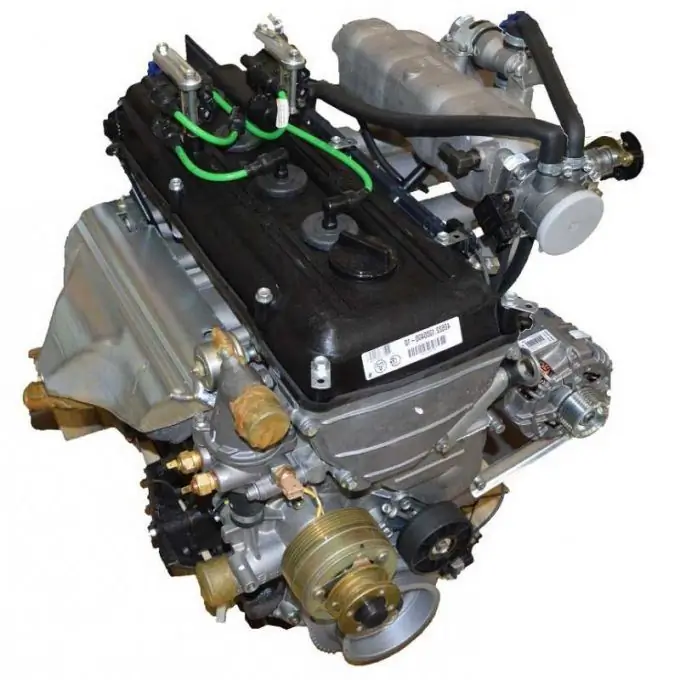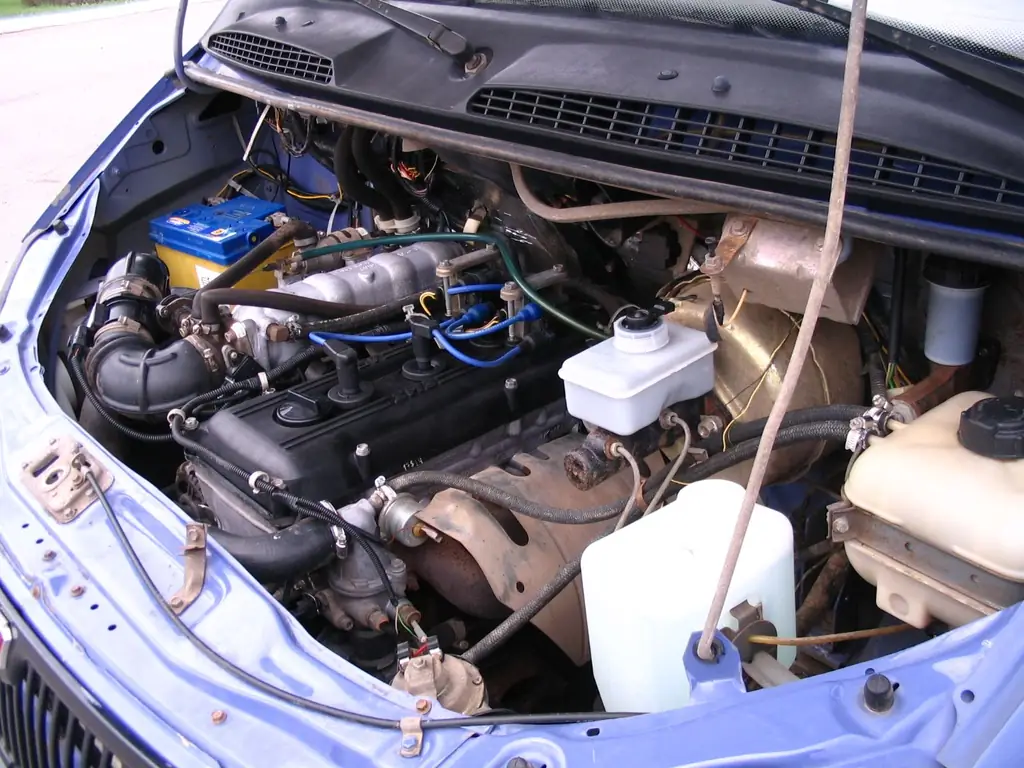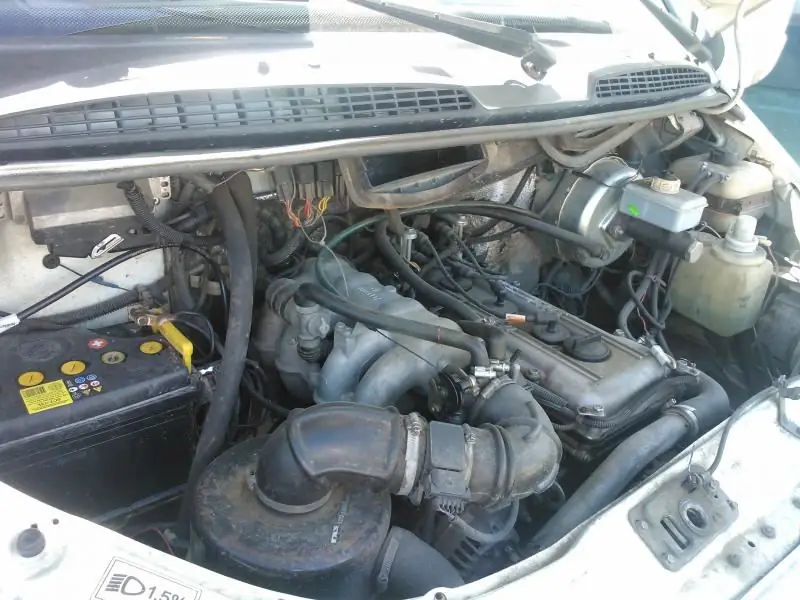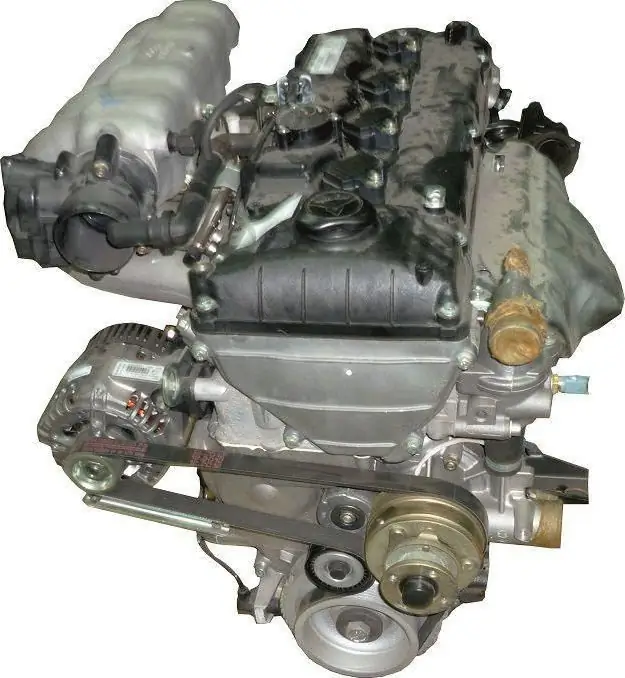- Author Maria Gibbs [email protected].
- Public 2023-12-16 03:05.
- Last modified 2025-01-22 17:48.
The ZMZ engine family, which includes the products manufactured by Zavolzhsky Motor Plant, also includes the legendary 405 gasoline engine. This famous gasoline engine has become a real visiting card of the domestic auto industry after it was recognized by world car manufacturers. After all, the "metal heart" of a vehicle of this brand began to be installed not only on the domestic GAZ, but also on the popular Fiat models.

After the refusal to produce the 402 engine, the factory designers were given a serious task to develop a new generation of gasoline engines with more powerful and perfect characteristics. This was the reason for the appearance of the ZMZ-405 engine, which began to be equipped with Gazelles and Volga. This engine has a fuel injection system that distributes fuel in the most optimal way, while significantly reducing fuel consumption. In addition, the 405 engine uses a 16-valve main cylinder block (cylinder head), which structurally very seriously distinguishes it from its predecessor.
Specifications
The ZMS-405 engine can be considered, in the full sense, an injection modification of the ZMS-406 carburetor engine. And it began to enter the international market under the Euro-3 trademark, which allowed the 405 engine to reach not only a higher level of sales, but also seriously popularize the products of the domestic auto industry. Now many foreign-made vehicles are equipped with the brainchild of Zavolzhsky Motor Plant. And it was the manufacturers of Fiat cars that made their debut in this important undertaking for our country. One of the world leaders in the automotive industry signed a major contract with OJSC ZMS for the supply of these motors and components for them, which marked a new era for the Russian flagship in this segment of the consumer market.

This engine has a modification 405 (Gazelle), which is intended for the production of exclusively trucks and passenger vans of the Gazelle and Sobol brands. This motor model has catalog number 405.020. An important characteristic of the 405 engine ("Gazelle") is its orientation towards increasing traction power, and not towards speed parameters.
In order to truly assess the technical capabilities of the 405 engine (Gazelle, Sobol), you need to refer to its main parameters. This motor has the following basic characteristics:
- the volume of the engine is 2, 484 liters;
- power - 115-140 horsepower;
- weight - 184 kg;
- number of cylinders - four;
- the number of valves - four for each cylinder: a total of sixteen pieces;
- piston diameter - 95.5 mm;
- piston stroke - 86 mm;
- the average level of fuel consumption is 9, 5 liters per hundred kilometers (“city” mode - 11 liters, “highway” mode - 8 liters);
- environmental standards - according to the "Euro 0-4" standard.
The 405 engine ("Gazelle") is distinguished by its special adaptation to the harsh Russian climate, and therefore the operating temperature range from -40 degrees Celsius to +40 degrees Celsius allows it to feel great in any region of operation. In this case, individual words are required by the excellent work of the liquid engine cooling system, which effectively copes with all loads, preventing the motor from overheating.
Maintenance
An important element of the trouble-free operation of any technical device is, of course, its correct maintenance. This is what should be paid special attention to when working with the 405 engine ("Gazelle"). Usually, on the recommendation of car manufacturers, maintenance must be carried out for every twelve thousand kilometers of vehicle mileage. In this case, the primary operations include precisely the replacement of the oil and the oil filter.

However, the manufacturer of the 405 engine ("Gazelle") believes that maintenance should be carried out when the car has run from ten to eleven thousand kilometers. This approach can significantly increase the resource of a gasoline engine. Moreover, when operating this engine using gas equipment, its maintenance must be carried out already when the car has run from eight and a half to ten thousand kilometers.
Usually, due to the intensive operation of the 405 (Gazelle) engine, it is recommended to undergo maintenance every eight to nine thousand kilometers. This is due to the fact that in the increased operating mode of the engine, the chemical composition of the oil changes, which loses its performance characteristics. In addition, for every fifteen thousand kilometers the car runs, the valves should be adjusted and the appropriate shims should be installed.
To avoid costly engine repairs, including cylinder head replacement, and restore its performance, you must carefully monitor the state of the gas distribution unit. Indeed, due to the fact that they did not make a timely replacement of the belt with a roller, a situation may occur when the valves are deformed due to a broken belt.
In addition, the valve cover gasket requires special monitoring of the condition, which must be replaced every twenty thousand vehicle runs. Do not forget about replacing the air filter, which the manufacturer of the 405 engine ("Gazelle") recommends every twenty-five thousand kilometers of vehicle mileage.
Repair
As practice shows, repairing the 405 (Gazelle) engine can in the full sense be attributed to simple and affordable technical manipulations due to the fact that its design is simple and reliable enough, and the availability of spare parts in the consumer market is always guaranteed. The only difficulty in this context may be the possible boring of the crankshaft and cylinder block.

The procedure for major overhaul of the 405 (Gazelle) engine is as follows:
- disassembly of the engine;
- diagnostics of power mechanisms and parts;
- drawing up a plan of the required operations and drawing up a list of necessary spare parts;
- purchase of spare parts and consumables;
- adjustment of the crankshaft to the size of the liners, including its groove;
- cylinder head boring-honing;
- the necessary replacement of parts of the cylinder block;
- grinding of all planes and pressure testing for cracks;
- parts washing;
- primary assembly of the engine and identification of possible additional materials and spare parts;
- final assembly.
In addition, it is important to know that the installation of the crankshaft is associated with its balancing. And this procedure is carried out only when installing a new clutch. Also, when repairing the cylinder head, it is necessary to make a mandatory replacement of hydraulic lifters.
Tuning
During the operation of the 405 (Gazelle) engine, many motorists express a desire to take advantage of tuning. Such a specific modification of the motor is associated with the following set of modernization operations:

- Replacing the cylinder block. As an option, you can use the development of the company "JP", which is perfect instead of the standard version.
- Replacing the injector. It is important to understand that the modernization of the fuel supply system is associated not only with an increase in engine power, but also with additional fuel consumption, which will be set within new limits - about fifteen liters per hundred kilometers.
- Replacement of the exhaust manifold and exhaust system. This improvement comes with an accurate calculation that must be done on your own.
- Boring of the piston system. Time consuming process that does not guarantee optimal results. In this case, we are talking about increasing the piston diameter from 95.5 mm to 98 mm, which will make it possible to count on additional engine power in the size of up to 20%.
Professionals recommend tuning engines exclusively in special ateliers, where qualified specialists will be able to upgrade the engine without losing its resource and damaging its condition. After all, this practice usually leads to a 30% decrease in motor life, which, in turn, leads to a quick overhaul.






